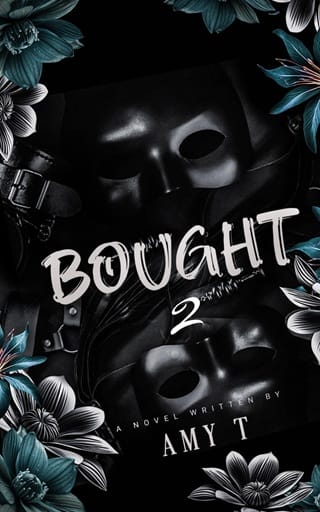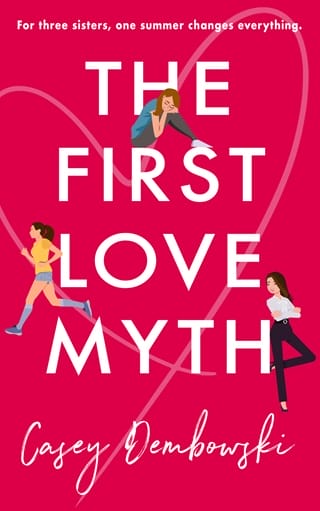Chapter 12
Monday, April 8
Holly sits behind her white concrete desk, a minimalist rectangle without drawers that the clinic’s designer badgered her into ordering. She has yet to hear back from Aaron’s attorney. Bracing for the worst, she googles her own name again and, after finding no new links, rechecks her social media. Still nothing. She’s amazed it hasn’t all blown up since she left Elaine’s place on Friday. Holly read somewhere that social media posts get more attention on Mondays. She wonders if Elaine deliberately waited for the weekend to pass to target a wider audience.
Patients with terminal illnesses report how the time spent waiting for the diagnosis to be confirmed—the biopsy to come back or the scan to be interpreted—can be the most unnerving period, worse even than the certainty of a medical death sentence. Waiting now for Elaine’s accusations to go viral is Holly’s closest comparable experience, and yet she is remarkably calm. Ever since she vaped DMT in her grandfather’s solarium, she has felt almost detached. As if the potential career-ending fallout from Elaine’s allegations will affect someone other than herself. As if the price she will pay for being a pioneer of psychedelic therapy will be worth the cost if her patients are freed of their addictions. As a psychiatrist, she’s impressed by the grounding power of DMT. And, as a diehard psychedelic therapy advocate, she feels vindicated.
But Holly hasn’t been able to shake the thoughts of the fatal crash since she saw her dad again in her visions after vaping DMT. It reminds her of Peru. Despite the profound healing power of that ayahuasca retreat, Holly had forgotten the main downside of those visions: the niggling sense of incompleteness. She could sense essential details from the car accident lying just below the surface of her consciousness but refusing to bubble up to it. The frustration of not remembering has returned now like an itch she can’t quite reach.
Holly glances down at her open handbag and sees the tip of the vape pen, which her grandfather insisted she take home with her, poking out of the inner pouch. She resists the temptation to take a few puffs now to see if she can conjure her father again. To fill in that vital memory gap.
A light knock at the partially open door pulls Holly from those thoughts. She gently nudges her bag closed with the toe of her shoe. Tanya, her sweet but overwhelmed office assistant, opens the door wider.
“That, uh, reporter called again,” Tanya says, bobbing from foot to foot.
Holly nods. She doesn’t need to ask her assistant which reporter. It could only be Katy Armstrong, who writes for the Orange County Register.
After Simon went public, admitting to his battles with addiction and glorifying Holly’s therapy, she was inundated with media requests. She did a handful of select interviews, from the New York Times to NBC. She only agreed to speak to Katy because she represented the most-read local newspaper.
Holly can still picture their conversation, which they held in this office.
Petite, with black hair tied in a tight ponytail and wearing throwback, round wire glasses, Katy looked innocuous enough. But from the moment Holly sat down across from her, she could tell by the young reporter’s body language—elbows dug into the armrest, back arched, and shoulders tilted forward as if ready to pounce—that this interview would be different from the others.
After a couple of softball questions, Katy launched right into it. “At the end of the day, Dr. Danvers, aren’t you basically replacing one addiction for another?”
Holly shook her head. “Psychedelics don’t work that way. They’re not addicting in the traditional sense.”
“Can you elaborate?”
“Most psychedelics, like ketamine, activate serotonin receptors inside the brain. They reduce the energy needed to switch between different activity states and help reprogram the pathways. We call it neuroplasticity. In other words, they stimulate regions of the brain that aren’t normally active. And those effects last long after the drug wears off. Unlike other medications, antidepressants for example, we don’t keep clients on psychedelics indefinitely.”
Katy leaned farther forward, her eyes probing. “Just how long do you keep your patients on them?”
“Depends on the indication. But in general, it’s one treatment with ketamine per week for three to six months.”
“And in that time, patients come to your office every week to get high?”
“No,” Holly said, focusing on her breathing, refusing to let herself be provoked. “Once a week, they come in for administration of ketamine under carefully monitored and controlled conditions. Those are followed by two more sessions—in one-on-one and group settings—to debrief and cognitively deconstruct the experience.”
“And this method of yours cured Simon Lowry?”
“You know I can’t comment on individual clients, Katy.”
“But he already said it did. I was just hoping to hear your perspective.”
Holly only smiled and shook her head.
“All right,” Katy said. “Can we talk about the risks associated with psychedelics?”
“Like all medications, they have side effects. But compared to most other psychiatric medications, they’re relatively safe and well tolerated.”
“What about the deaths? Like the stories of people jumping out of buildings because they thought they could fly?”
“There are very few deaths attributable to ketamine. Most of those occurred among recreational users who co-ingested multiple other substances like alcohol, GHB, or opioids.”
Katy eyed her skeptically. “And what about the potential for sexual violation?”
“Violation?”
“Like with that large study in Canada where some therapists were caught on video surveillance molesting patients who were drugged.”
“Unfortunately, rare as they are, cases of unethical therapists abusing their clients’ trust and vulnerability do occur. But the overwhelming majority happen without the use of any psychoactive medication.”
At the time of the interview, which was well before Elaine’s allegation, Holly had thought the reporter was just reaching for sensational claims to disparage her therapy. She was tempted to ask Katy if she or someone close to her had suffered a traumatic experience involving psychedelics, but Holly bit her tongue. In the end, she felt as if she had held her own in the interview and, to the reporter’s credit, the article was less biased or negative than what she had expected. Since the story ran, Katy has reached out regularly for follow-up, but Holly hasn’t replied.
Now, as she imagines how Katy might respond to Elaine’s allegations, Holly fights off a shudder and pushes the thought away. “You know the drill, Tanya.”
“You’ll call her back when you have a free moment?” her assistant asks.
Holly nods. They both understand it to mean she will ignore the call. “Can you please bring in the next client?”
A minute or two later, Tanya ushers in the last client of the day, Liisa Koskinen.
The fiftyish psychologist wears another loose-fitting, shapeless dress, this one a dull green. But as Holly sits down across from her, the first thing she notices is her colleague’s posture. Unlike previous sessions, when Liisa would sit ramrod straight, today she leans back in her seat with her hands resting loosely on her lap. Even her expression is free of the usual tension across her square jaw and through the frown lines at the corners of her eyes.
“Liisa, you look—”
“Less defensive?” she ventures with a wry smile. It transforms her face.
“I was going to say relaxed.”
“I’m not the easiest client, am I?” Liisa is grinning now, and the rare smile makes her look younger.
“It can be tough for those of us in this field.”
“To be a patient?”
“Exactly.”
“And you know this from personal experience?”
Holly shows her a small smile but doesn’t take the bait. She has no intention of sharing the details of her own mental health history. That would be crossing a line.
“There I go again, don’t I?” Liisa laughs. “Always trying to analyze the analyst.”
“Hard to turn it off, isn’t it?”
“A real job hazard. But it’s not like this is my first time in therapy. I can’t quite figure it out.”
“Figure what out, Liisa?”
“Self-care is one of the basic principles in psychology. The non-aviation equivalent of putting your own oxygen mask on before trying to help anyone else. I’ve worked with a few therapists before you, but I’ve always resisted letting them in beyond a certain point. This time… it’s turned out different.”
“Different good or different bad?”
“Good,” Liisa says. “I must admit I was very skeptical of the whole idea of using psychedelics in therapy. I wasn’t a believer.”
“But you came here anyway,” Holly says.
“I was desperate. I’d tried everything else. From hypnosis to anesthetic detox. But I was still a slave to Xanax. I couldn’t sleep without one. Or, for that matter, get through a day without a pill or two.” Liisa shakes her head. “Who am I kidding? I couldn’t make it to lunchtime.”
“And now?”
“I haven’t swallowed a single pill since you put us under dual therapy.”
Holly flushes with satisfaction. Validation, too. All the risk she assumed in pushing the envelope with dual therapy seems worthwhile knowing that the last holdout in the group has reached sobriety. But all Holly says is “Does that make you more of a believer in psychedelics, Liisa?”
“I’m getting there, yes.”
Holly can tell from her frown that there has to be a caveat. “But?”
“When something seems to be too good to be true…”
“I’ve thought the same, too. Psychedelics do have side effects. Plenty of them. You’ve seen the dysphoric reactions in our group.” Holly can’t help but think of Elaine, and it dampens her mood. “And some of those experiences… the trips… they can’t be unseen.”
“I guess nothing is perfect. In truth, all drugs are poisons.”
For the first time since meeting her, Holly feels a real connection with her colleague. And she senses the opportunity to dig deeper. “Can we talk a bit more about your mother?”
Liisa sighs. “All roads lead back to childhood, huh?”
“Not always, no. But as we both know, childhood trauma is the single biggest risk factor for adulthood addiction.”
“True.”
“Do you remember much about her?”
Liisa looks down. “Hardly anything. She died a few weeks after I turned four. A massive blood clot during childbirth. Technically, the day after. I never saw her again after she went to the hospital.” Her voice drops. “I lost a mother and gained a baby sister.”
“That must have turned your world upside down.”
Liisa shakes her head. “I don’t really remember any of it.”
“Your sister’s arrival?”
“My mother,” Liisa says. “I’ve seen photos, of course. But it wasn’t until I took the dual psychedelics that I recalled any real memories of her.”
“How did you respond to those memories?”
“They were…” Liisa clears her throat. “Kind of liberating.”
“You felt her love?”
Liisa only shrugs.
“OK. What about your dad?”
“It was tough for him. Freshly widowed with a baby and a toddler at home. And still working long hours in the physics lab at UC Santa Cruz. With an hour commute each way from our home in Monterey. Being Finnish to the core, my father just ignored the grief. To this day, he still doesn’t speak of my mother’s death.”
“How would you describe childhood without a mom?”
Liisa considers it for a moment. “My father always provided for my sister and me, but he didn’t know how to express his feelings. Not even sure he was capable of it. And then, after he remarried, our stepmother, Helmi, tried, in her way. But she wasn’t much better.”
Holly leans toward her. “You didn’t feel loved as a child?”
Liisa’s cheeks redden. “So what? With or without a mother, countless children grow up feeling the same. And they don’t wind up as Xanax addicts.”
Holly smiles patiently. “If one of your clients said the same to you, you might call it deflection.”
“Maybe so.” Liisa clears her throat again. “But my trauma still pales compared to what, say, someone like Elaine went through.”
“Everyone’s trauma is unique,” Holly says, but Liisa’s comment resonates. “What about your daughter? She’s in college now, isn’t she?”
“She’s a senior,” Liisa shifts in her seat. “What does this have to do with her?”
“Your experience growing up without a mother… did that affect your own approach to parenting?”
“I never knew any different.” She shrugs. “Besides, Kimberly is strong.”
Liisa has been evasive about her homelife from the outset. Holly still doesn’t know what happened between Liisa and her ex-husband, only that he lives on the East Coast now. Recognizing her client’s rising defensiveness, Holly veers the conversation elsewhere, focusing on abstinence strategies until the end of their session.
After Liisa leaves, Holly finishes her charting. Just as she is about to pack up for the day, her assistant appears in her doorway, shifting from one foot to the other. “What’s up, Tanya?”
“There’s a Tyler Golding on the phone,” she says. “He wants to talk to you about his sister.”
Holly’s heart thuds as she connects the surname. “Elaine’s brother?”
Tanya nods. “He says it’s important.”
Holly suppresses a groan. Is this how it begins? “Put him through, please.”
Seconds later her phone rings and, after taking a deep breath, Holly answers. “Dr. Danvers.”
There’s a long pause. “I’m Tyler Golding. I think you know my sister, Elaine.”
“I’m sorry, but I’m not at liberty to discuss my clients.” Holly braces for the expected verbal tirade.
He hesitates. “I’m kinda worried about Elaine.”
She sits up straighter. “Why?”
“I can’t reach her.”
“I don’t mean to pry, Tyler, but I thought you and your sister were estranged?”
“I haven’t spoken to Elaine in almost three years.” Before Holly can ask anything further, Tyler adds, “Growing up, we were tight. But then the drugs. Nonstop. Elaine put our family through hell. The lies, the stealing, the revolving-door rehab visits… My dad died of a heart attack before he was fifty. Mom followed him a couple years later. They called it cancer, but I’m pretty sure she just gave up.”
“That must have been hard for you to see,” Holly says, still wondering as to the purpose of his call.
“I never bought any of my sister’s bullshit about being some kind of opioid victims’ champion. She might’ve fooled the others, but last time I saw Elaine, she was higher than a kite. I could see it in her tiny pupils. And I wasn’t about to let her put me in an early grave, too.”
“I get it, Tyler.” Holly thinks of the times Elaine mentioned her sadness over her estrangement from her little brother, without ever explaining the reason behind it. “So why are you trying to reach your sister now?”
“Elaine called me a couple days back. A bunch of times. Then she blew up my phone with texts. She left this rambling voicemail. Some weird stuff about childhood trips on our uncle’s boat and how she’d never let anything like that happen again.”
Holly’s breathing picks up, and her grip tightens on the receiver. “Did Elaine explain what she meant by that?”
“Nope. All the other messages were about how she’d turned over a new leaf. How she found a cure for her addiction. Psychedelics or something? Not that I believed a word of it.” He snorts. “But Elaine told me that if I didn’t get back to her, she was going to drive up to San Jose to track me down.”
“Did you call her back?”
“I tried. Last night. Even followed up with a couple of texts. But she hasn’t responded. Even though she made it sound urgent.” He sighs heavily. “You know how it is with opioid addicts. When they stop answering your calls…”
Holly knows exactly how it is, but she still can’t slow her breathing. “How did you find me, Tyler?”
“I don’t know any of Elaine’s friends down there. But she mentioned your name in a couple of texts. And I found your office online.”
“I see.”
“Look, I’m four hundred miles away. I thought, maybe…”
“Yes, Tyler.” Holly rubs her temples. “I’ll check on your sister.”
“Thank you, Dr. Danvers.” He pauses. “And if… if you do find my sister, please tell her not to come looking for me. I’m not ready to see her yet.”
After she disconnects, Holly cradles the phone in her hand, wavering. The last time she attempted to intervene with Elaine, she only made the situation worse. But how can she leave things as they stand? Particularly after what she just learned from Tyler.
Holly takes another deep breath and then tries Elaine’s phone, but it goes to voicemail.
“Screw it,” she mutters under her breath as she hops up from her desk.
Holly drives over to Elaine’s building, fighting what passes for rush hour traffic in Laguna Beach, and parks in the same spot as she did two days ago, beside the blue Nissan. She steps up to the ground-floor door and knocks. Her mouth goes dry, and her palms dampen. After their run-in, she never expected to find herself at this door again, let alone so soon. No answer. She knocks harder. Still nothing.
“Elaine!” Holly calls, pounding on the door with the side of her fist.
A minute or more passes without a reply.
Holly reaches for the doorknob. It turns freely. Pushing the door open slightly, Holly calls out again. “Elaine? Are you home?”
When there’s still no answer, Holly opens the door wider and takes a tentative step inside. Just as she’s about to call out again, something in the corner of the living room catches her eye.
Across the room, Elaine is slumped on the chair, her head angled back, her ear pressed to her shoulder. Her vacant eyes are wide open. Her skin is the color of slate. A single trickle of blood has dried from the crease of her left elbow down the inside of her forearm.
An empty syringe lies beside her bare foot.
 Fullepub
Fullepub 



